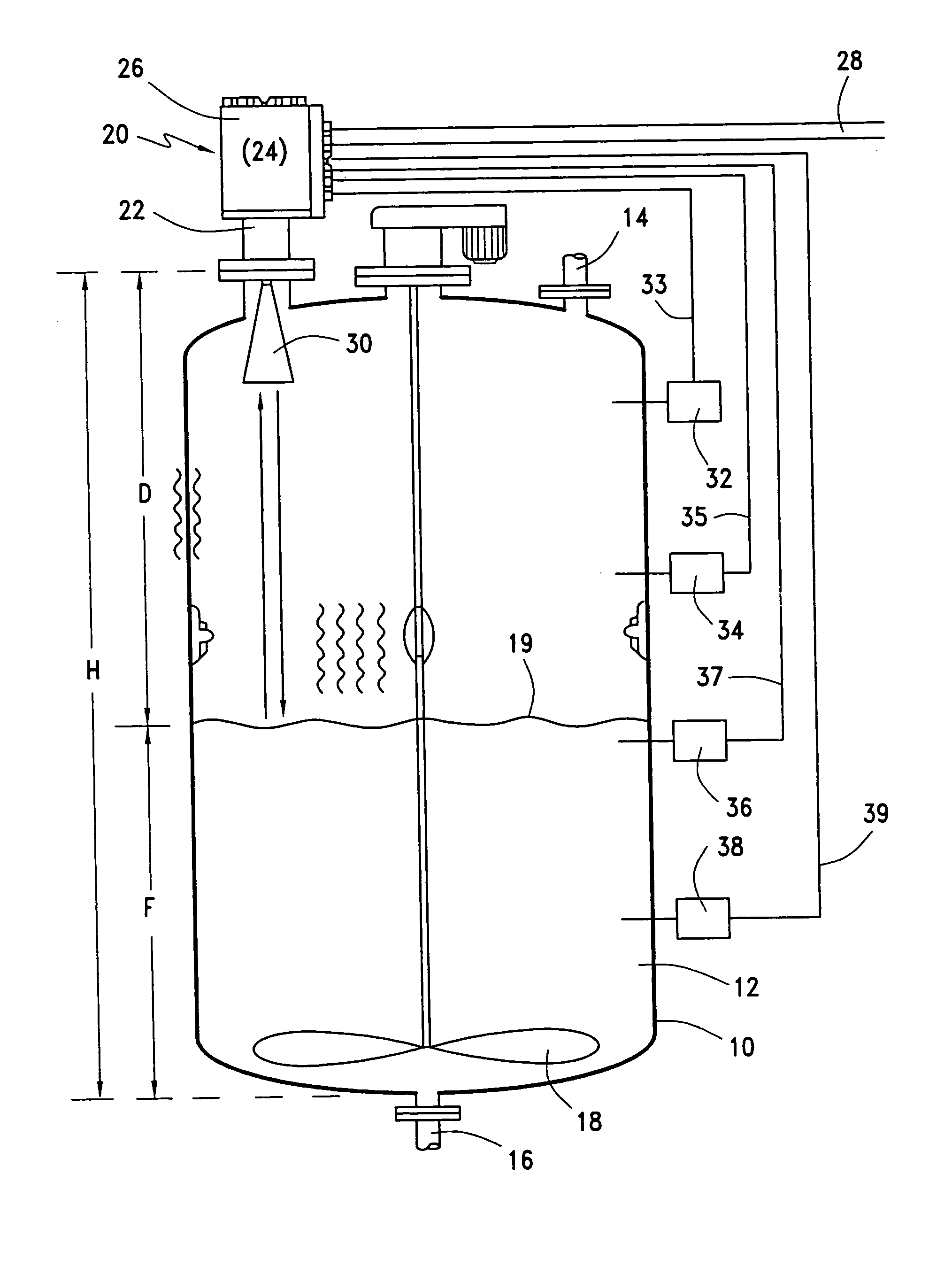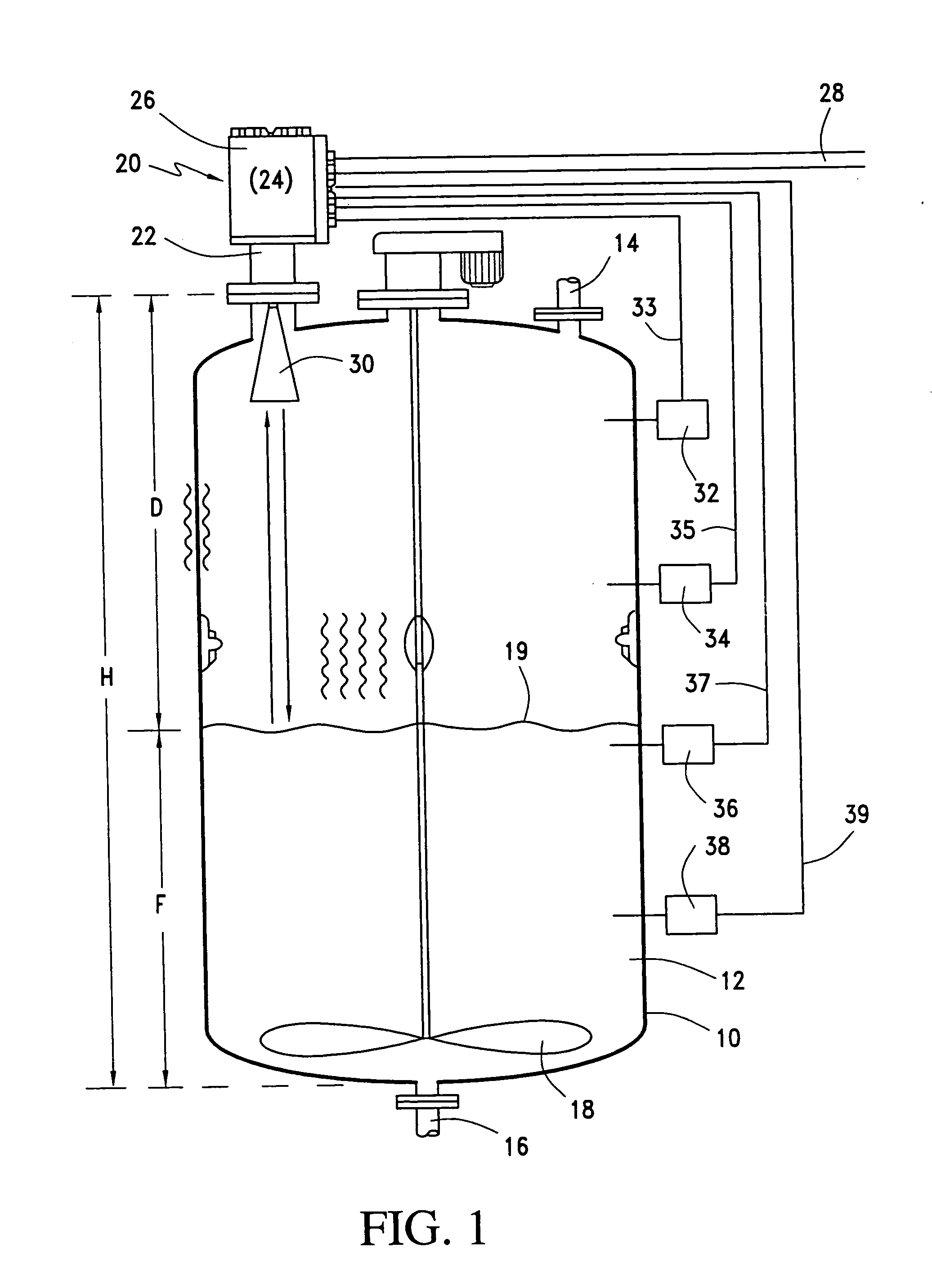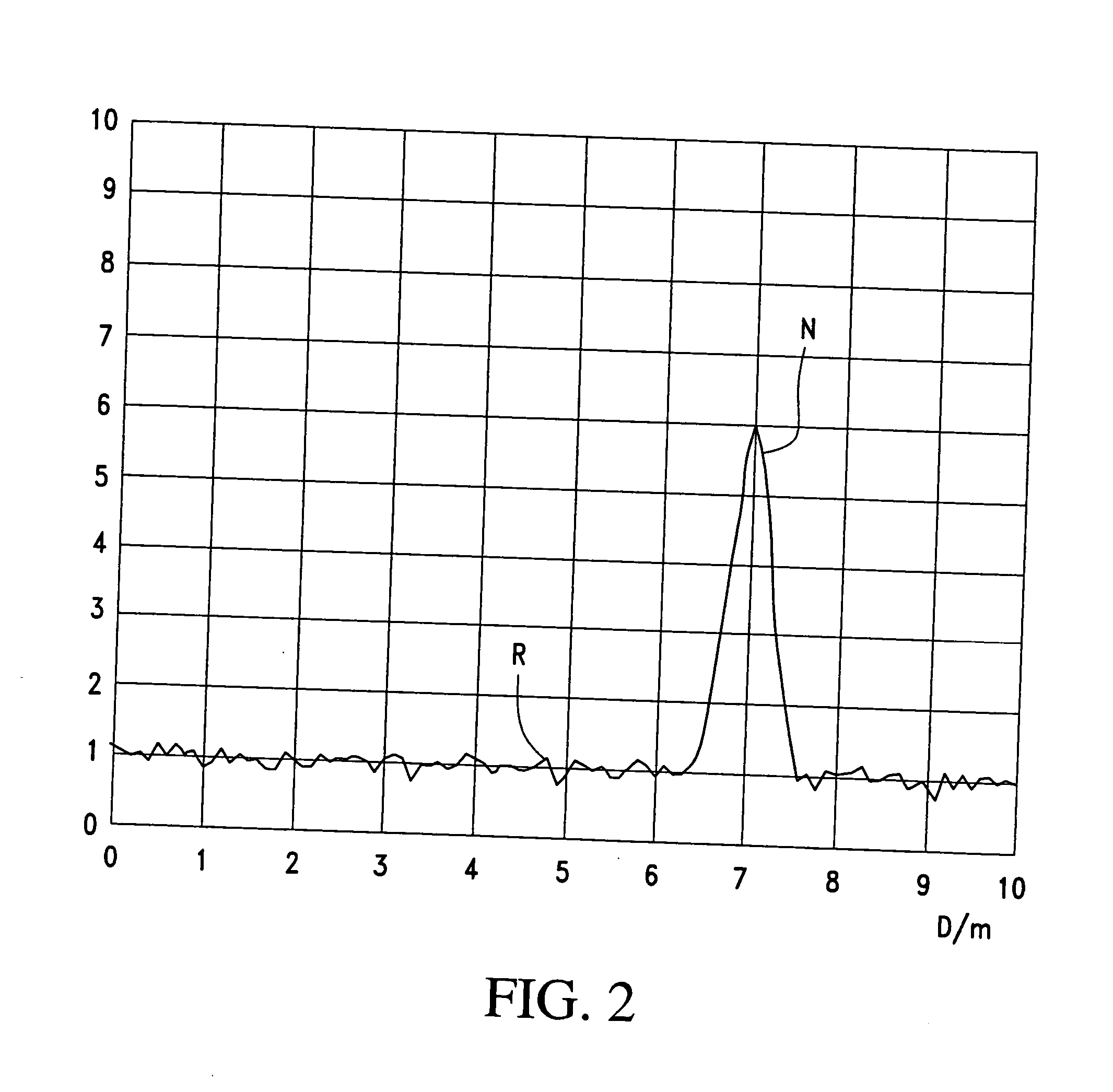Arrangement for measuring the level of contents in a container
a technology for arranging and measuring the level of contents in containers, applied in the direction of engine lubrication, liquid/fluent solid measurement, reradiation, etc., can solve the problems of unfavorable use of echo, inability to achieve, and prove to be difficult or impossible in large containers, etc., to achieve the effect of eliminating the measurement error
- Summary
- Abstract
- Description
- Claims
- Application Information
AI Technical Summary
Benefits of technology
Problems solved by technology
Method used
Image
Examples
Embodiment Construction
FIG. 1 of the drawing shows a container 10 which is partly filled with a material 12. The container is equipped with an inlet 14 for feeding material into the container and an outlet 16 for removing material from the container. The container may be fitted with other devices familiar to the man skilled in the art, depending on the type of material, for example with motor-driven stirring tools 18. The level F is the height of the surface of the material in the container 19 above the lowest point of the container. This level changes as material is added to the container and as material is removed from the container.
For the continuous measurement of the contents level in the container 10, a level measuring device 20 operating according to the transit time principle is located at the container above the highest possible contents level. The level measuring device 20 comprises a contents level sensor 22 which transmits waves to the material surface 19 and receives the echo waves reflected...
PUM
 Login to View More
Login to View More Abstract
Description
Claims
Application Information
 Login to View More
Login to View More - R&D
- Intellectual Property
- Life Sciences
- Materials
- Tech Scout
- Unparalleled Data Quality
- Higher Quality Content
- 60% Fewer Hallucinations
Browse by: Latest US Patents, China's latest patents, Technical Efficacy Thesaurus, Application Domain, Technology Topic, Popular Technical Reports.
© 2025 PatSnap. All rights reserved.Legal|Privacy policy|Modern Slavery Act Transparency Statement|Sitemap|About US| Contact US: help@patsnap.com



